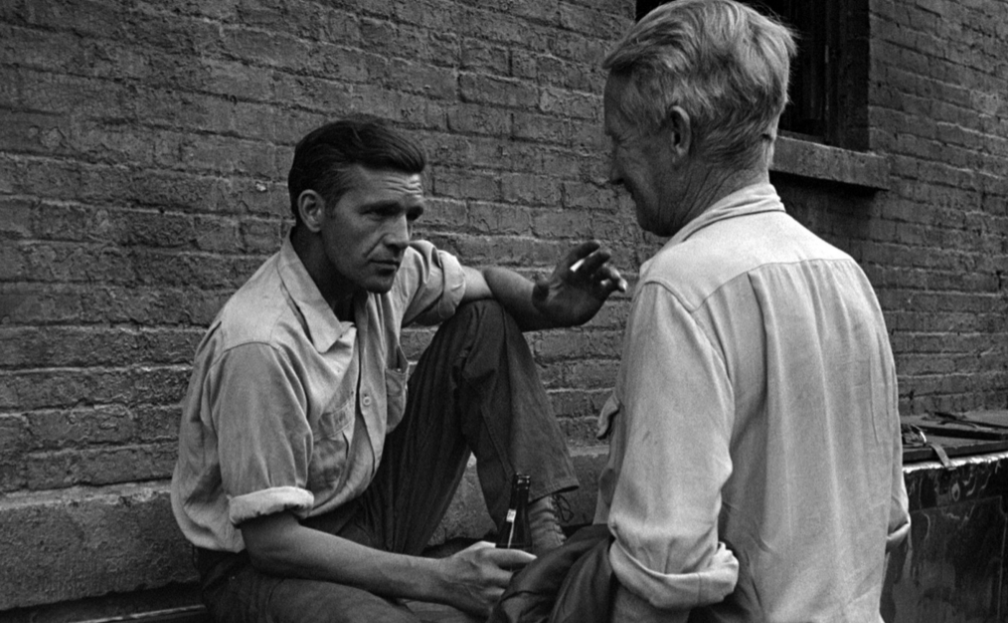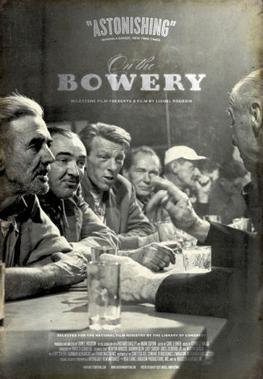
This is an interesting film. It helps to know the history of this movie before watching it in order to really appreciate what you are seeing.
Filmed in 1955, On the Bowery is what is known today as a docu-drama. It has elements of documentary mixed in with a scripted performance. It was actually nominated for an Academy Award for Best Documentary that year, despite having a script. Things have changed since then.
The movie follows a down-on-his-luck railroad worker as he arrives in Manhattan looking for a day’s work. In actuality he is a homeless raging alcoholic or what some may have called in those days, “A Tramp”.
The Bowery is a street in Manhattan. Its nothing like today where only the wealthy and rent-controlled tenants can live there. In those days people slept on the streets and in parks by the score.
This movie employed real homeless people and barflies. There wasn’t a professional actor among them. Ray Slayer, who plays the main character, was offered a $40K contract after filming wrapped to come to Hollywood and make more movies. He declined the offer and wondered off the scene. 7 years later he would die choking on his own vomit while intoxicated.
The other main player in this movie is Gorman Hendricks. He too was a true-to-life alcoholic. He would in fact die from Cirrhosis of the liver before the movie was even released. Despite Doctors having warned him of his condition and the fact that one more rager may just do him in, Hendricks celebrated the wrapping of the film the only way he knew how. He got wasted.
 The director’s name was Lionel Rogosin. He was the son of a wealthy textile manufacturer. He decided to leave the family business and strike out on his own to make movies. This was his first effort. Hearing that a good filmmaker should really get to know his subjects, Rogosin rented an apartment in Greenwich Village and would hang out down on the Bowery. He befriended the patrons of gin joints and selected those folks who would eventually become the subjects of his movie. He later lamented the fact that he was carrying on like an alcoholic himself and was walking on the “edge of the void” as he put it.
The director’s name was Lionel Rogosin. He was the son of a wealthy textile manufacturer. He decided to leave the family business and strike out on his own to make movies. This was his first effort. Hearing that a good filmmaker should really get to know his subjects, Rogosin rented an apartment in Greenwich Village and would hang out down on the Bowery. He befriended the patrons of gin joints and selected those folks who would eventually become the subjects of his movie. He later lamented the fact that he was carrying on like an alcoholic himself and was walking on the “edge of the void” as he put it.
This movie is the best portrayal of the sadness and sickness of the disorder of alcoholism that I have ever seen. Here you have groups of people carrying on who all know exactly what they are doing to themselves but continue anyway. They plainly talk about how “the drink got em'” and “it’s the only thing I know”. The film showcases the true madness of addiction.
“A milestone in American cinema… On the Bowery is very special to me. Rogosin’s film is so true to my memories of that place and that time… It’s a rare achievement.” – Martin Scorsese
